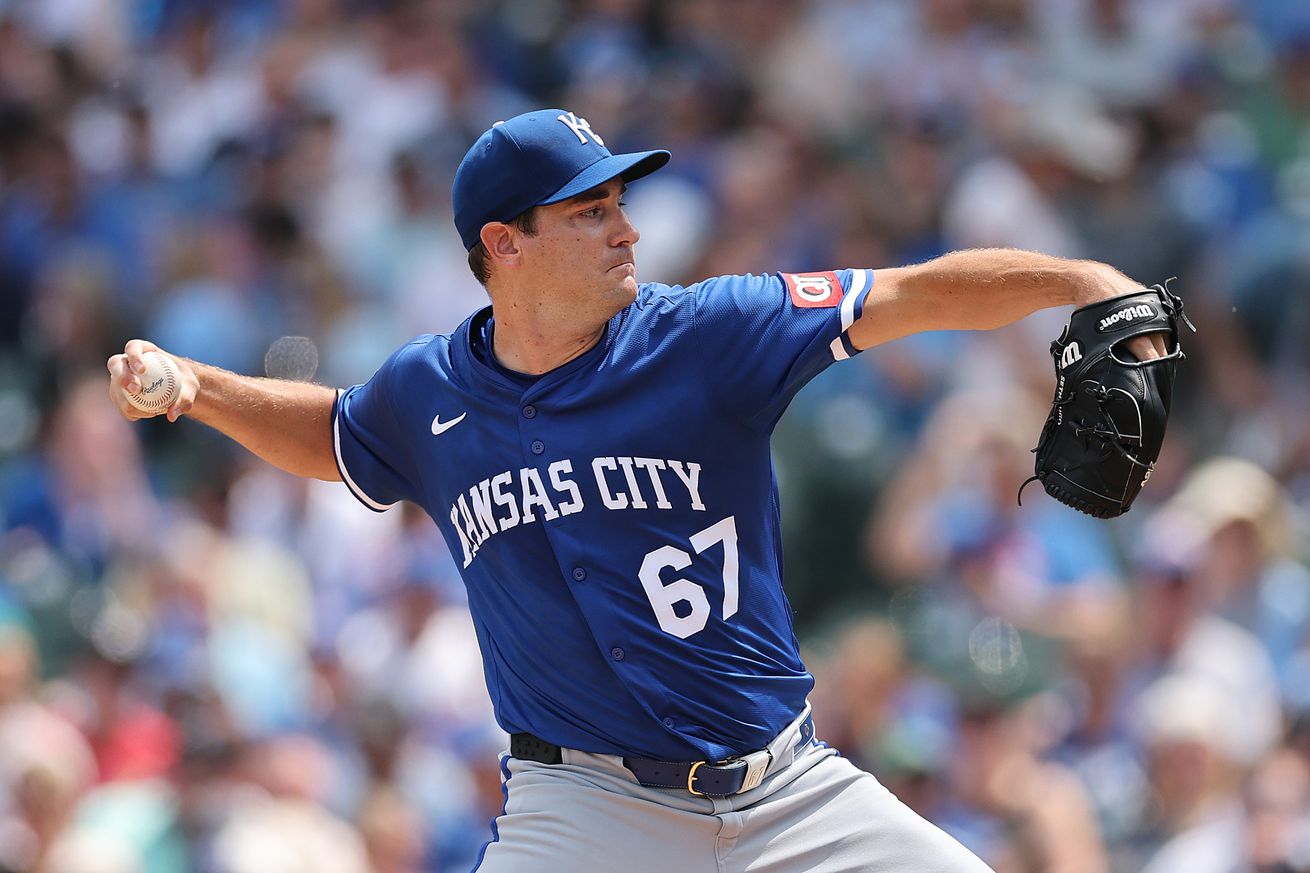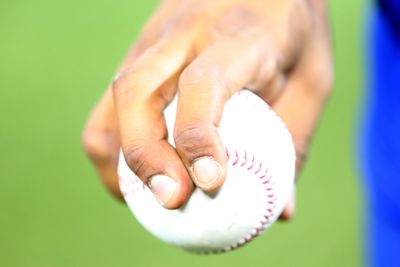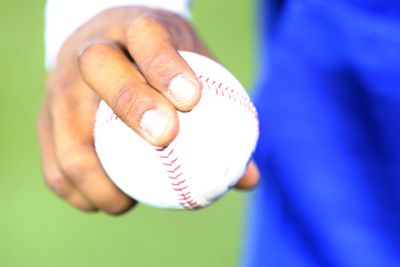
Even in an era where everyone wants to throw hard and get strikeouts, the two seamer is making its return
For nearly every pitcher in baseball, establishing a quality fastball is one of the most essential steps for someone to find success. Fastball pitches (4-seam, 2-seam, sinker, cutter) make up just shy of 50% of all pitches thrown in the major leagues, with some starters like Garrett Crochett and Drew Rasmussen throwing fastball variations upwards of 80% of the time.
At the beginning of the Statcast era, fastballs and their variations were thrown even more. In 2008, just over 60% of pitches thrown were fastballs, and this number has steadily decreased, dropping below 50% for the first time in 2023. Now the emphasis for pitchers is not to throw a lot of fastballs, but rather to throw high-quality fastballs with high velocity and spin.
Due to the new desire among front offices to add pitchers with high-velocity fastballs, many pitchers have abandoned variety and focused on building power behind their fastball. For pitchers looking to blow a pitch by a hitter, the four-seam grip is the most popular, as demonstrated below by Marcus Stroman.

Steve Russell/Toronto Star via Getty Images
The Four-seam grip allows a pitcher to rip his fingers downwards, getting high backspin on the ball and allowing it to carry through the zone. This grip also allows a pitcher to stay behind the ball at all times, allowing them to put as much power as possible into the offering. When thrown properly, a four-seam fastball comes in hot and appears to rise through the zone due to the back spin keeping it from falling the way a hitter would expect.
Pitching is an art that is constantly evolving, and right now, baseball’s analytics have shown that the most effective thing a pitcher can do is to force high whiff rates. To increase the number of swings and misses, pitchers are throwing harder, attacking the upper part of the zone with their fastballs and using more breaking balls than ever before. But as always, the question becomes… Is there an even better way to teach young pitchers?
The increased use of the four-seam fastball over the years has resulted in fewer pitchers using two-seam/sinker grips. In general, the average two-seam fastball sits 2-3 MPH slower than the average four-seamer, but the appeal of a two-seam offering is the arm-side run and sink pitchers can get on the offering. It is challenging to get arm-side run due to the way the wrist is capable of twisting, making this pitch very difficult to pick up.
Below are two images of two-seam fastball grips, with the top being Marcus Stroman’s sinker, and the bottom being Chien-Ming Wangs traditional two-seamer.

Steve Russell/Toronto Star via Getty Images

SetNumber: X80093 TK1 R1 F1
For both images, pitchers lay their fingers right over the laces, but offset the palm of their hand to allow the ball to roll off the fingers with a bit of side spin. Marcus Stroman’s grip, with the fingers closer together, will enable the ball to slip off the side of the fingers and spin more. This spin allows for more downward movement on the ball and causes it to dip below bats or force ground balls.
While these pitches often register as the same offering (almost always labeled a sinker), they have different profiles and can do different things. A great example of this would be Tarik Skubal, who uses a traditional two-seam grip and gets great horizontal movement, but rather than dipping, the ball can tend to carry through the zone. Whereas someone like Ranger Suarez of the Phillies gets more spin on the side of the ball and looks for it to sink so that he can force ground balls and bad contact.
People often think the two-seam is best used for soft-tossing guys who need movement on their fastball to make up for the lack of velocity, but that is not necessarily the case. This is especially true for the traditional two-seam grip, similar to what you see from Chien-Ming Wang and Tarik Skubal. Today, I am going to focus on that grip and why I think (almost) every pitcher should have a two-seam grip in their arsenal to be most effective.
There are so many ways this pitch can be used. Greg Maddux became famous with his front hip two-seamer to opposite hitters, which would freeze hitters and catch them looking at strike three. Many pitchers throw sinkers down and in to same-handed hitters to force them to roll over and ground out. Two-seam grips can also be thrown up in the zone with carry and will miss the end of the bat when hitters are swinging at what they think is a straight four-seam fastball.
I’m going to use Tarik Skubal as my main example, as he is a master of the pitch and has learned how to effectively incorporate it into his arsenal. For starters, Skubal does not fit the mold of someone most people think would rely on a two-seamer. He is a big 6’3, 240-pound pitcher who has an elite four-seam fastball that sits upper-90s and can touch triple digits. But a big part of what has allowed him to develop the dominance he has had on the mound is the two-seam grip he added in 2021.
Skubal’s two-seamer only sits .3 MPH slower than his four-seamer, but has almost 8 inches more arm-side run. His ability to get the armside run on the pitch without sacrificing velocity makes every pitch in his arsenal better. The hitter has to expand their zone, because of the threat that a 98 MPH fastball could stay straight, or could run 8-10 inches. Then, just as you have gotten a feel for those pitches, he takes 10 MPH off of it with a changeup, and the hitter is simply lost.
Several other pitchers have introduced this idea into their arsenal. Guys like Tyler Glasnow, Jack Leiter, Hunter Brown, and many more have added a two-seam offering over the last few years. For the Royals, Michael Wacha, Kris Bubic, and Jonathan Bowlan are all guys who have added a two-seamer or have started throwing them more to keep hitters off balance.
Because this pitch allows pitchers to get arm-side run on their fastball and does not cost a significant amount of velocity, it has begun to gain popularity. The two-seamer itself is not an ideal primary offering, but it is an easier pitch to learn and is incredibly valuable as a complementary pitch to a bigger arsenal. Getting run over sink is the name of the game, and if a pitcher can get a feel for this pitch, every other offering becomes more effective.
For this very reason, while sinkers and two-seamers were starting to become obsolete, they are making a return yet again. Every pitcher could benefit from learning the pitch, regardless of pitching style. Lefties and righties, soft tossers can use this pitch to generate bad contact, while power pitchers could use this offering to miss bats up in the zone.
Regardless of style, I think (almost) every starting pitcher should learn this pitch and alternate fastball offerings. The Royals staff has recognized this, and that is why young pitchers in the organization have been learning new fastballs. Soon, other teams may catch on, but for now, the Royals have found a premium on teaching pitchers quality sinkers, two-seamers, and cutters that constantly keep hitters guessing.
